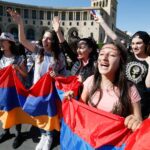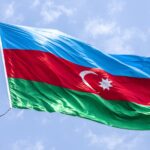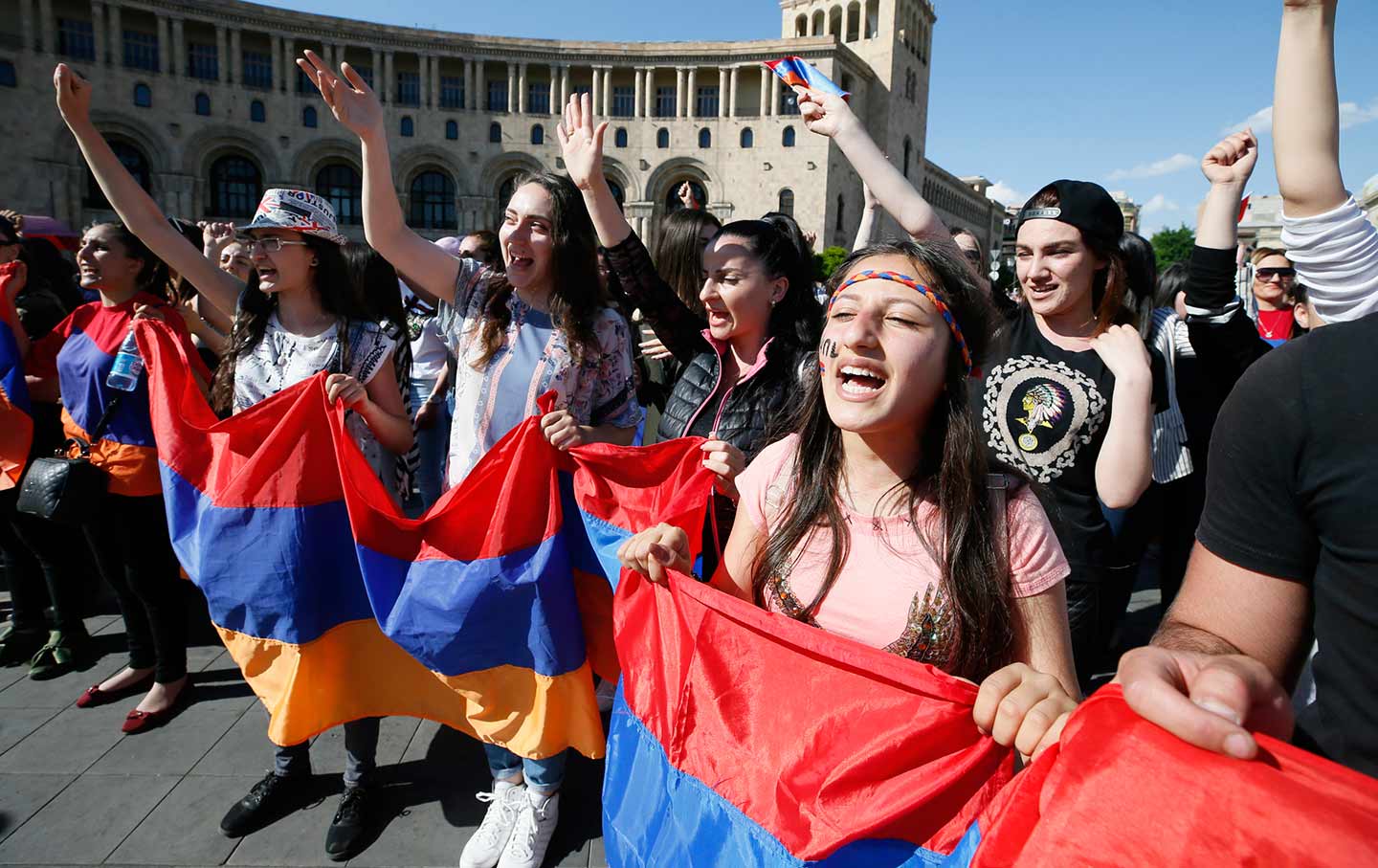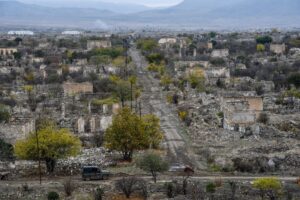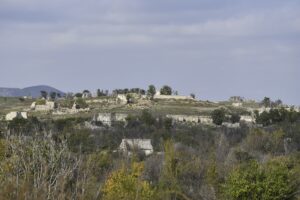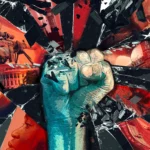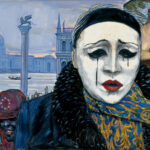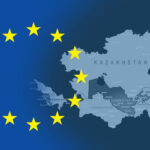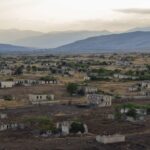More than three years have passed since the end of the second Karabakh war, yet a peace treaty between Azerbaijan and Armenia has not been signed. The reasons lie in historical memory, national pride, and the deep emotional wounds left by the last war. The process of accepting the new reality and transitioning to peace has been far more challenging for Armenian society than anticipated. To understand the current situation in Armenia, it is necessary to analyze both historical events and their consequences, as well as the psychological characteristics of the Armenian people, which have led to the current state and continue to create obstacles on the path to establishing peace in the region.
The Bitterness of Victory
Victory in the first Karabakh war in the early 1990s was perceived by Armenian society as a significant achievement and at the time it indeed seemed like a triumph. Western countries, which had become new centers of attraction for the former Soviet republics, expressed their support for the Armenians. In the public consciousness of Western citizens, Armenians were often portrayed as victims, and Western media described the territorial conflict in the South Caucasus as “the extermination of ancient Christian Armenians by radical Islamist Azerbaijanis.” In those years, Americans and Europeans did not notice contradictions in using such stereotypes about the former Soviet republic, following the traditions of orientalist worldview. Unconditional and unequivocal support for Armenians from the West, without deep analysis of the problem or based on Christian solidarity, sharply contrasted with the Azerbaijani perception of Western media and institutions’ professionalism and competence. The perception of the West and its values in Azerbaijan over the past three decades has been shaped by this sense of injustice.
The situation with Western moderators, empowered to help the parties settle the conflict, also lacked objectivity and impartiality. After the defeat in the first war, the mediators insisted that Azerbaijan accept the situation and not count on the return of Karabakh to its composition.
Victory as a Coincidence Rather Than a Law
Victory in the first Karabakh war brought Armenia a temporary sense of triumph, but subsequent economic, political, and social difficulties in the country turned out to be so significant that they outweighed this positive effect. Over the years of occupying Azerbaijani lands, Armenians failed to preserve and develop the achieved results. It was expected that after the victory in the war, there would be a rise in morale and positive changes in society, but the situation turned out to be much more complicated. Armenia failed to lift either its economy or Karabakh, turning the once-flourishing region of Azerbaijan into a scorched land.
After occupying Azerbaijani territories and conducting ethnic cleansings, resulting in no Azerbaijanis left in Karabakh and Armenia, Armenia faced a justified economic blockade from Azerbaijan and Turkey. The war and economic collapse destroyed the country’s infrastructure. Significant economic difficulties began in the country, a shortage of resources and goods, inflation, and unemployment. The lack of stable energy and transport systems complicated economic recovery. Internal instability, terrorist acts such as the parliament shooting, led to the absence of long-term development strategies and reforms. Widespread corruption and inefficient management of state resources exacerbated economic problems and caused public discontent. Economic and social problems forced many Armenians to emigrate, leading to demographic losses and brain drain. The constant threat from neighboring countries and regional tension increased the sense of insecurity and instability. As a result, not knowing how to effectively manage and use the achieved success, Armenians were unable to hold onto victory in the long term. They did not know what to do with the victory; it became a burden.
Ancient or Aging?
To understand the reasons for this phenomenon, I turned to some Armenian sources, among which the article by Doctor of Medical Sciences, Professor Sukiassyan S.G. “The Character of the Nation: An Attempt at Psychopathological Analysis of the Armenian Ethnos,” written in 2007, stood out significantly. The author analyzes in the article the ethno-psychological characteristics of the Armenian ethnos through the prism of psychopathology, emphasizing how historical events and social changes have influenced the character and behavior of the Armenian people, especially after the late 1980s.
Sukiassyan presents the results of a social survey in which Armenians were asked: “What, in your opinion, are the main characteristics that characterize Armenians before and after 1988?” Analyzing the data led him to the conclusion that the positive characteristics of Armenians before 1988 were replaced mainly by negative ones after 1988. Before 1988, characteristics such as hospitality, humanity, peacefulness, law-abidingness, and others stood out among Armenians. After 1988, traits such as insecurity, emptiness, despair, apathy, suspicion, greed, and cunning began to dominate. Let me remind you that in 1988, which Professor Sukiassyan considers a turning point for Armenians, Armenians first voiced their territorial claims to Azerbaijan and started the war.
Listing important points of pride for Armenians — the ancient state of Urartu, Erebuni, Great Armenia from sea to sea, the ancient culture of Metsamor, Zvartnots — Sukiassyan notes with regret that psychopathological traits of the Armenian ethnos, such as paranoia and hysteria, have become dominant in the national psychology. Historical traumas, leaving a deep mark, led to the development of post-traumatic stress disorder. Examining the problem of aging of the ethnic group through the prism of analogy with mental and physical aging of the individual, the author argues that current problems do not find their solution precisely because of aging, the historical and psychological aspects of which he also lists.
It is evident that Armenian society tends to focus on the past, not creating a “today,” which complicates adaptation to new realities and hinders the peace process. It is necessary to abandon the excessive emphasis on “antiquity,” “the first acceptance of Christianity,” and other narratives used to justify irredentism, which have no practical value in the context of realpolitik, moreover, contributing to the preservation of archaic views based on ballads about “the most ancient and most tragic history.”
What Should Armenia Do?
For Armenia, a critical moment has come when the future of the country depends on the ability of society to adapt to new realities. Historical traumas and pride in past achievements cannot serve as the only guideline in shaping modern politics and public consciousness. Instead, efforts must be directed towards constructive understanding of the present and strategic planning for the future.
The eternal problem of intellectuals, including Armenian ones, lies in a strong attachment to the comfort zone. Armenian intellectuals, in my opinion, often choose the strategy of reflecting the nation, which is undoubtedly comfortable but does not solve problems. Succumbing to the pressure of mass sentiments, intellectuals capable of analysis conduct their smart and deep discussions about reality only in narrow circles. Such closedness and clubbiness hinder the formation of public discourse. Although Armenia is considered a “young democracy” where everything can be discussed, there remains a significant number of topics that are not subject to public discussion in the country without consequences for the initiators of the discussions.
There are also a huge number of fears in society, fueled by media personalities in Armenia. Their irresponsible behavior and the spread of myths about a hostile environment, such as the formidable Turkic union striving to destroy Armenia, reinforce fears and the belief that Armenians play the role of a “wedge” between the Turkic world from the Pamir Mountains to the Bosporus, preventing their union through the Zangezur Corridor. This has also become a source of pride and justification for isolationism.
Such closedness and belief in a special mission will only hinder Armenians from adapting to modern realities and establishing open and flexible relations with surrounding countries. Confidence in their significance, mission, and expectation that their demands will necessarily be fulfilled, as well as hope for “the omnipotence of the diaspora” and “Western military aid,” lead only to disappointments and increase the sense of isolation.
It is important to understand that discussing problems and having an open dialogue is like group therapy, necessary for the health of society. For Armenia’s successful development, it is necessary to overcome this cultural inertia and begin to openly discuss pressing issues. Intellectuals should come out of narrow circles and engage in public discussions, forming a new public discourse that will help adapt to modern challenges and foster interaction with neighbors.



